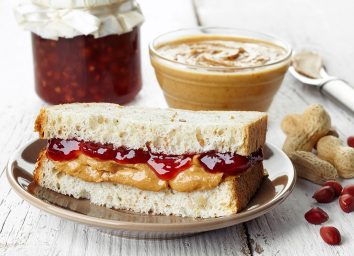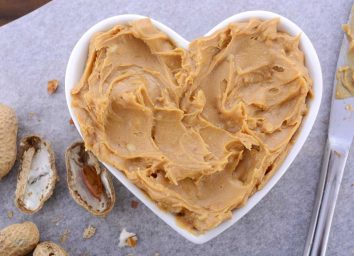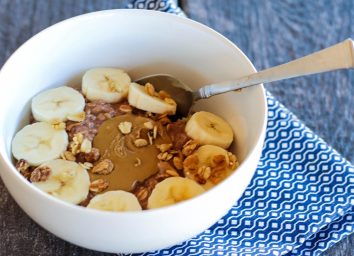Is Peanut Butter Healthy? We Review the Evidence
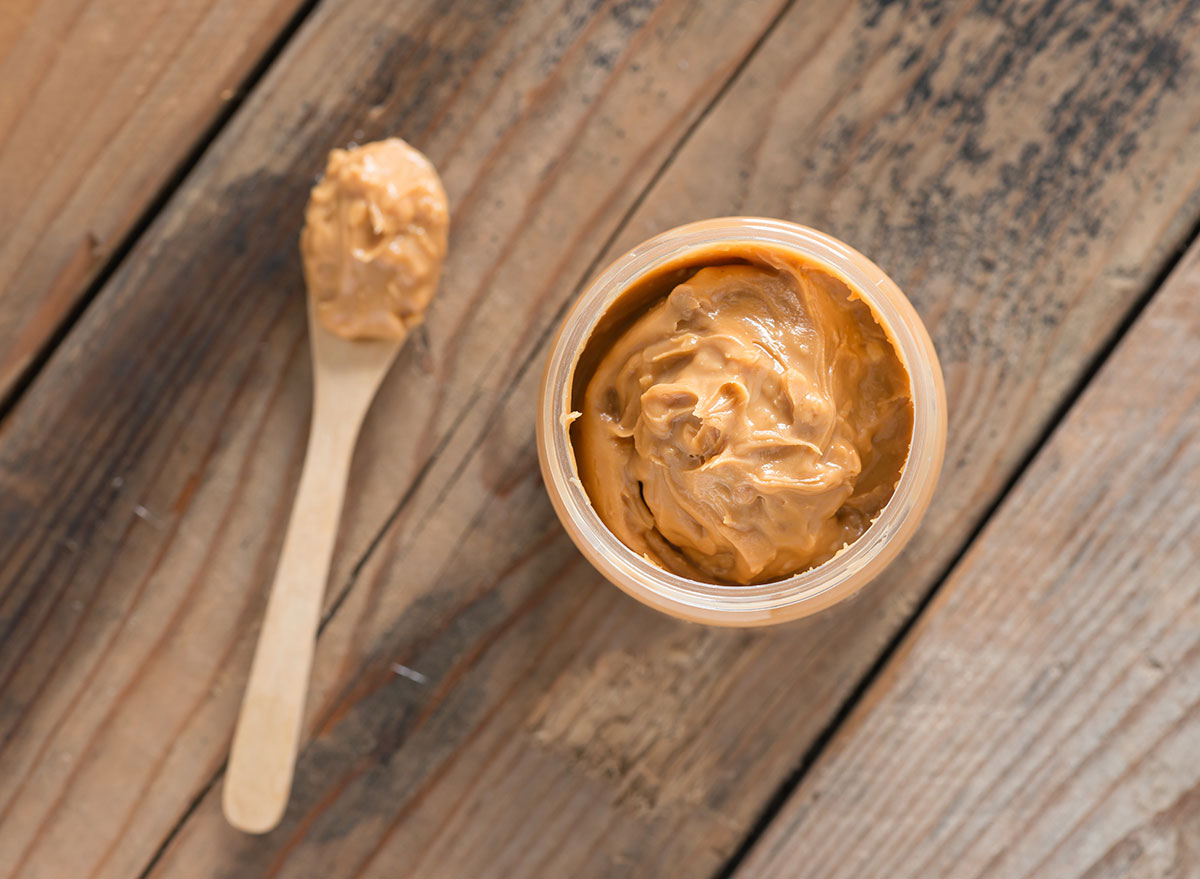
The universal truth on peanut butter? It's beloved by everyone from preschoolers to parents, hikers to bikers, and late-night snackers to breakfast lovers. All for the simple fact that it's delicious! And versatile! (Have you seen these 30 Things You Can Make with Peanut Butter?) And easy to store in your pantry!
But, there's a long-standing debate about whether or not peanut butter is actually healthy for you. Well, it's time to settle it once and for all.
Okay, so is peanut butter healthy?
The short answer: peanut butter can absolutely be healthy. But peanut butter brands vary greatly, so knowing for sure whether or not your nutty spread of choice is healthy requires peeking at the ingredient list. Better yet, just peruse our list of best and worst peanut butters—we've done the work for you!
STAY INFORMED: For more healthy eating news, make sure to sign up for our newsletter!
At its healthiest, peanut butter is a one- or two-ingredient spread. (That second ingredient being salt.) At its least healthy, it contains additional oils (which displace healthy fats and lower the amount of protein per serving), sugar (when you're eating peanut butter with jelly, this is just unnecessary), and unnecessary additives like mono- and diglycerides.
Case in point: One two-tablespoon serving of plain peanut butter from Smucker's contains 190 calories, 16 grams of fat, 7 grams of carbohydrates, 3 grams of fiber, 2 grams of sugar, and 8 grams of protein. On the other hand, that same serving size of white chocolate flavored peanut butter—that's made with added sugar and oil—contains 180 calories, 13 grams of fat, 12 grams of carbs, 2 grams of fiber, 7 grams of sugar, and only 6 grams of protein. So the addition of extra ingredients lowers fiber and protein levels while increasing sugar.
What's the nutrient content of peanut butter?
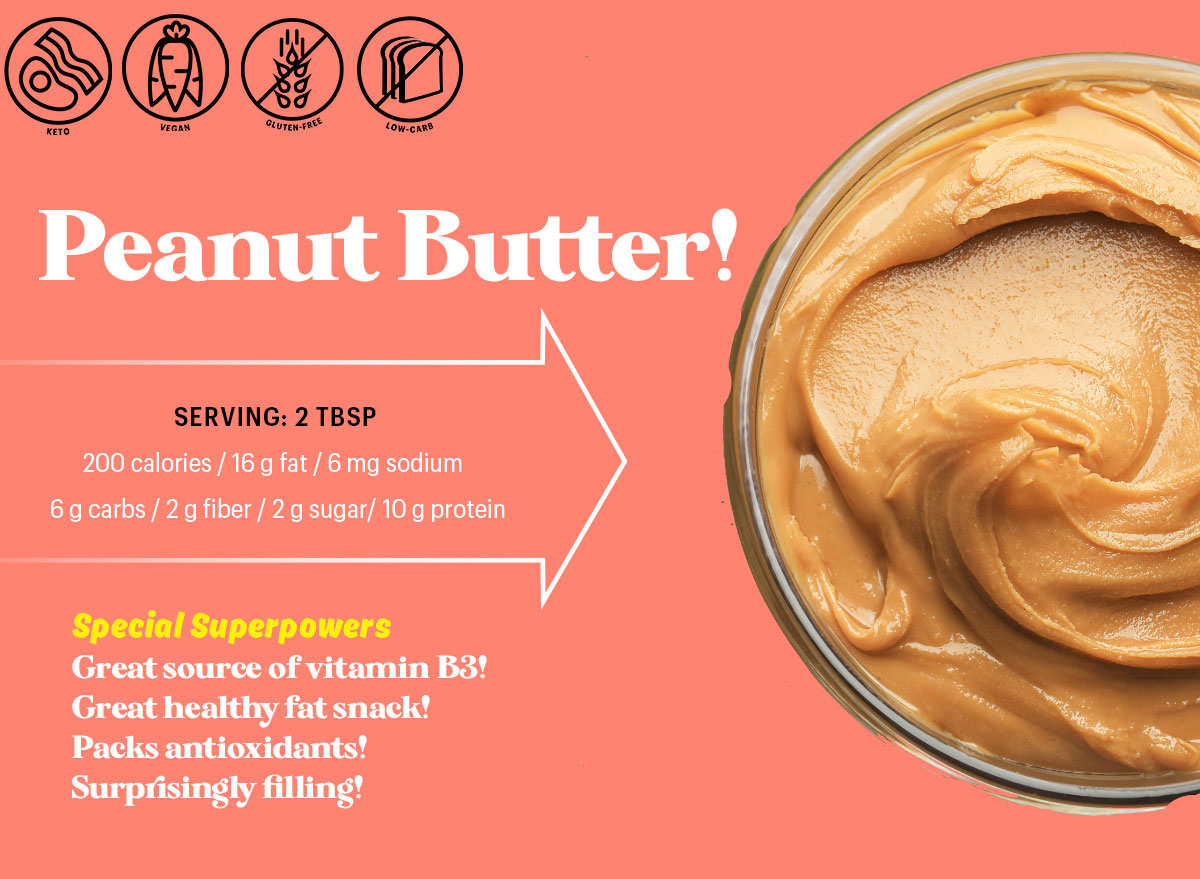
After spooning through an entire tub of peanut butter (just us?), you probably looked at the nutrition label. But if you have more self-restraint—or buy fancy, label-free, churn-it-yourself butter at your local health shop—here's what's in two tablespoons of peanut butter with salt:
- Calories: 190
- Fat: 16 g
- Sodium: 135 mg
- Carbohydrates: 7 g
- Fiber: 2 g
- Sugar: 3 g
- Protein: 7 g
Right away, the fat content probably jumps out at you. For just two tablespoons of the stuff, that's quite a bit. But, don't let that put you off too much.
Fat may have a bit of a reputation problem, but it should definitely be a part of a healthy diet—especially when it comes to healthy fat, which is what's in peanut butter! Fat gives cells energy, supports heart and organ health, and helps us feel fuller for longer. In fact, fat (and peanut butter) can be so darn satiating, snacking on it can actually keep you from grazing on less healthy options. Win!
Peanuts also provide more protein than any other nut per serving, which means peanut butter packs more of a protein punch compared to other nut butters. For instance, while almond butter and cashew butter only provide 6 and 4 grams of protein per serving, respectively, peanut butter provides 10 whopping grams of protein per serving. And, hey, that's no small difference.
Beyond offering a big nutrient bang per your caloric buck, peanut butter is also surprisingly micronutrient-dense. Just one serving of the stuff supplies a fair bit of vitamin E, vitamin B3, magnesium, and copper.
But with nearly 100 calories per tablespoon, peanut butter is by no means a low-calorie food. As with all things, everything in moderation certainly applies here. If you eat too much peanut butter, it can be unhealthy for you. But is peanut butter inherently unhealthy? No.
Can everyone eat peanut butter?
To state the obvious: people with peanut allergies should not eat peanut butter. Data suggests that peanut allergies afflict 2 percent of children, and 0.5 percent of adults (some people outgrow the intolerance as they get older).
Additionally, if your nut butter has any added ingredients that you are allergic to, you'll likely have an allergy to that particular tub. In summary: don't consume peanut butter that contains any ingredients that you're allergic to.
For everyone else, peanut butter is safe to eat. However, peanuts are a legume, and legumes aren't allowed on certain eating plans. Peanut butter is not allowed on the paleo diet or on Whole30, for instance.
The traditional keto diet also eliminates legumes, but because there are only 4 grams of net carbs per serving, peanut butter can easily be worked into a less-strict keto diet that allows 50 grams of net carbs. Atkins, another lower-carb diet, allows peanut butter after the induction phase.
The bottom line on peanut butter
Plain ol' PB can absolutely be a part of a healthy diet. Just try to stick to the two-tablespoon recommended serving so you don't send your calorie and fat intake soaring. Unless, of course, you're hiking and need the extra energy. In which case, you can also load up on these 23 Best Foods for Energy Metabolism.

